What is a Turbocharger ?
A turbocharger, basically known as a turbo, is a turbine-driven, forced induction device that increases an internal combustion engine’s efficiency and power output by forcing extra compressed air into the combustion chamber. This improvement over a naturally aspirated engine’s power output is due to the fact that the compressor can force more air and proportionately more fuel into the combustion chamber than atmospheric pressure (and for that matter, ram air intakes) alone.
Turbochargers were originally known as turbosuperchargers when all forced induction devices were classified as superchargers. Today, the term “supercharger” is typically applied only to mechanically driven forced induction devices. The key difference between a turbocharger and a conventional supercharger is that a supercharger is mechanically driven by the engine, often through a belt connected to the crankshaft, whereas a turbocharger is powered by a turbine driven by the engine’s exhaust gas. Compared with a mechanically driven supercharger, turbochargers tend to be more efficient, but less responsive. Twin charger refers to an engine with both a supercharger and a turbocharger.
Manufacturers commonly use turbochargers in truck, car, train, aircraft, and construction-equipment engines. They are most often used with Otto cycle and Diesel cycle internal combustion engines.
What is hybrid Turbocharger ?
A Hybrid turbocharger is an electric turbocharger consisting of a high speed turbine-generator and a high speed electric air compressor. The turbine and compressor are high-speed aeromachines, as in a conventional turbocharger. The electrical motors run at speeds in excess of 120,000 rpm and when used as generators, generate electricity at up to 98.5% electrical efficiency. High electrical efficiency is paramount, because there is no mechanical link between the turbine and compressor. In other words, hybrid turbocharger refers to a series hybrid setup, in which compressor speed and power are independent from turbine speed and power. This design flexibility leads to further improvements in turbine and compressor efficiency, beyond a conventional turbocharger.
Working operation
Acceleration
When the driver depresses the throttle, the HTT initially acts as an electric supercharger. The compressor motor is powered from the energy storage medium allowing it to accelerate to full operating speed in <500 ms. This rate of acceleration eliminates the turbo lag which is a major limiting factor on the performance of standard turbocharged engines.
During this transient stage, the engine control unit (ECU) on a standard turbocharged engine uses a combination of sensors such as lambda sensors and air mass flow sensors to regulate the fuel flow rate. In an HTT equipped engine the ECU can deliver the precise fuel flow rate for complete combustion more accurately. This is achieved by directly controlling the air flow rate and boost pressure via control of the compressor speed
Charging operation
At high engine speeds, there is more energy generated by the turbine than is required by the compressor. Under these conditions, the excess energy can be used to recharge the energy storage for the next acceleration phase or used to power some of the auxiliary loads such as an electric air conditioning system.
When combined with a variable geometry turbine, the back pressure on the engine can be varied according to the electrical demands of the vehicle and charge state of the energy storage medium.
Development is underway for replacing battery energy storage with a super capacitor which can be charged and discharged very quickly.
Steady-state
For the majority of the time the hybrid turbocharger is operating, the compressor and turbine power (not necessarily speed) will be matched. This gives an extra degree of freedom to the designer of a turbocharger impeller.
Here the hybrid turbocharger efficiently transfers the electricity between the turbine and compressor.
Advantage
With only a little increase in the dimensions, enough power can be generated from the main engine operation.
Fuel saving as the heat recovery system is used for driving the alternator.
The generator can function as a motor at low load operation to drive blower for maintaining scavenge air pressure of the main engine. Eliminate the installation of auxiliary blower for the main engine.
Follow Us Facebook Page
Also visit Importance of CAD CAM CAE
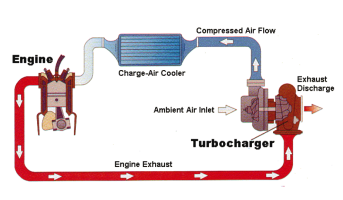
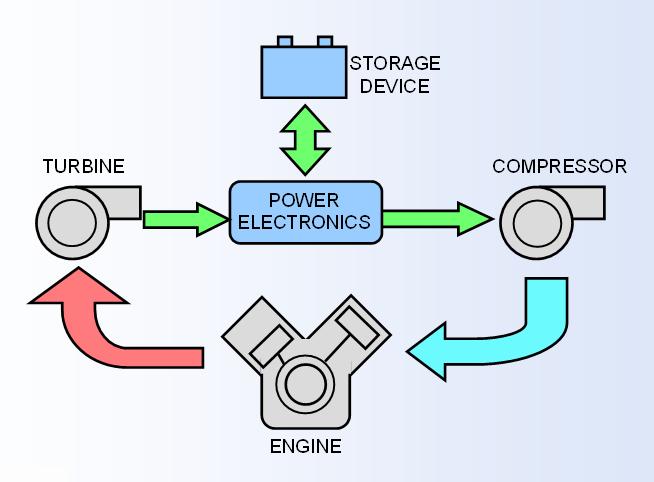

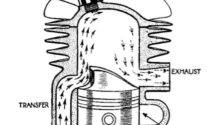
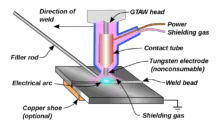

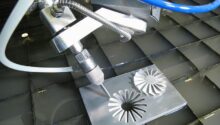
No Responses